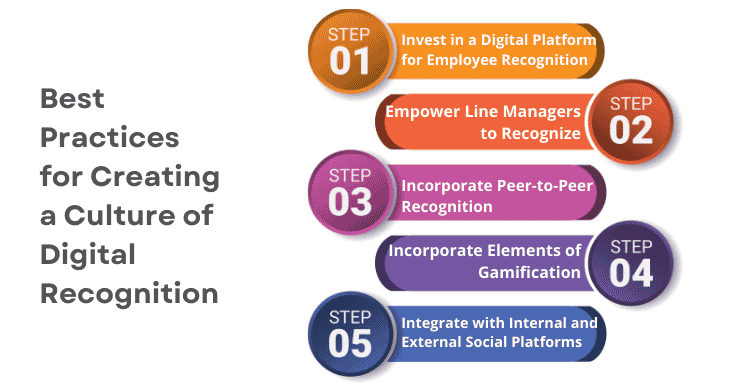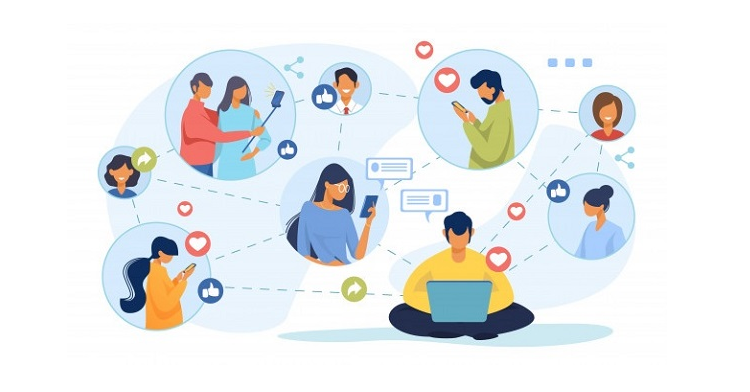1. Invest in Digital Platforms for Recognition: Organizations should adopt digital tools to streamline employee recognition, making it more accessible and efficient for all employees, regardless of location.
2. Empower Managers and Encourage Peer Recognition: Enable managers to provide instant recognition and encourage peer-to-peer acknowledgment, fostering a culture of appreciation and support.
3. Incorporate Gamification Elements: Use gamification features like reward points, leaderboards, and e-gift cards to make recognition programs engaging and increase participation.
4. Integrate with Social Platforms: Enhance visibility and impact by integrating recognition efforts with internal and external social platforms, promoting a culture of recognition both within and outside the organization.
Given the massive changes in the work environment, organizations need to keep their workforce engaged no matter where they are. Hence, many organizations seek to promote a digital recognition culture that can help them create an engaged workforce and drive business growth.
Also, read: How Employee Recognition Can Drive Culture Change in 2023

Today, employee recognition is one of the core aspects of the HR Strategy of any organization.
No organization can ignore employee recognition’s importance in driving their business growth and profitability.
Here’s a quick look at why employee recognition is so important for organizations:
1. Enhances Employee Motivation and Commitment
2. Improves Performance and Productivity
3. Contributes to a Positive Work Culture
4. Improves Collaboration and Teamwork
5. Increases Employee Retention
6. Enhances Employer Branding

Significantly, every organization’s workforce has become increasingly dispersed with incredible business growth and globalization.
Employees have been working from multiple offices, client locations, and even from remote locations.
Moreover, the pandemic, which has forced most of the workforce to work from home, has accelerated this.

In the future, most organizations are expected to have their employees in multiple locations.
This could be offices, factories, client locations, fields, or even homes.
Hence, organizations must make their employees feel appreciated and valued, irrespective of work location. Hence, digital recognition in organizations is the need of the hour today.
Digital recognition is an important component of the employee engagement strategy of most organizations.
Hence, they must ingrain it as part of their culture to make it long-lasting and sustainable and derive long-term benefits.
Here are a few best practices that can help organizations create and promote a thriving digital recognition program:
1. Invest in a Digital Platform for Employee Recognition
2. Empower Line Managers to Recognize
3. Incorporate Peer-to-Peer Recognition
4. Incorporate Elements of Gamification
5. Integrate with Internal and External Social Platforms


First and foremost, organizations need to invest in appropriate employee recognition tools that could digitize the entire employee rewards and recognition process.

Additionally, managers should be able to provide instant recognition to their team members in the form of Spot Awards and other rewards, whenever they see any significant achievement that is out of the ordinary.
They should be able to reward and recognize without going through formal processes and seeking multiple approvals.

Importantly, employees should be able to recognize their peers for their contributions or for any help or support received from them without going through a formal process.
Moreover, such acts of peer-to-peer recognition should be spontaneous and can make this behavior an integral part of the culture.

Additionally, the employee recognition platform used by the organization should include key elements of gamification such as reward points, walls of fame, leaderboards, and e-gift card options.
Such aspects make the program exciting and engaging for workforce members, especially the millennials, and drive their participation and involvement in the programs.

Importantly, one of the key ways to build a culture of digital recognition is by ensuring maximum social visibility within and outside the organization.
This can be achieved through integration with internal collaboration platforms such as MS Teams, Slack, and Intranet, as well as with social media platforms such as Facebook and LinkedIn.
Such best practices can make the process of digital recognition a key part of the organizational culture. This in turn can boost employee happiness and motivation, and enhance the overall performance of the organization.

Lead author: Sagar Chaudhuri, the Co-Founder and CEO of HiFives. He is an HR Tech Evangelist with over 25 years of corporate and entrepreneurship experience. In the past, Sagar has worked in leadership roles with companies such as Genpact, Infosys, and ICICI Bank. He has an engineering degree from IIT Kharagpur and an MBA from IIM Lucknow. Connect on LinkedIn
To stay updated on the latest HiFives blogs, follow us on Twitter (@MyHiFives)